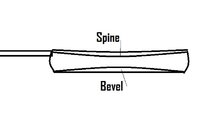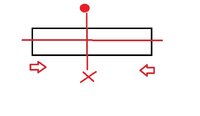I've honed dozens or razors but pretty much stick to Japan where they apparently have tight QA so I've never had a problem with setting a bevel.
I got this "Chabrol a Paris" a long time ago and it looks like I tried to hone it but gave up. It rocks slightly and you can see where it isn't even hitting the edge:


I've thought about sending it away because it needs new scales anyways but not sure if it's even worth it. I do like the blade though. It feels nimble despite being a near wedge.
Where do I go from here to get the bevel set properly?
I got this "Chabrol a Paris" a long time ago and it looks like I tried to hone it but gave up. It rocks slightly and you can see where it isn't even hitting the edge:
I've thought about sending it away because it needs new scales anyways but not sure if it's even worth it. I do like the blade though. It feels nimble despite being a near wedge.
Where do I go from here to get the bevel set properly?





